
Fate in the Darkness
As planned this is an RPG-sandbox in board game style, with a gothic fantasy atmosphere.
А living own life world, which you can interact through the game character, attended events, tasks and game deck.
The goal of this project is to port board game.
In this time the gameplay is a journey through the main game location.
This demonstrates the work I have done, from scratch.
The game is raw.
Core aspects such as: generation of game characters, map-pocessing algorythm, most part of AI logic and e.t.c. are mostly done. But still in need of optimization and content. Also there is a dungeon map-generator, but it’s unfinished and not integrated.
**Graphics will be changed and balance will be updated. Plenty of dialogs, events, tasks, items and objects are gonna be added.
Have in plans to add co-op up to 4 players and map-creation tools.**
Since it’s my pesonal project - I can change/add/delete any part of it if I see fit.
Patreon:
https://www.patreon.com/FiDsteam
Read More: Best CRPG Trading Card Game Games.

Crisis in the Kremlin
Well I’m a Chinese and it’s my first time to write a comment on steam, so if I say something wrong or something you don’t like please forgive me.
For me I want to recommend you to use Romanov or Gromyko. Actually all 4 characters in 1985 have chance to win including Gorbachev, yesterday I play as him and it’s not impossible to save the country but use him will have two problems. One is reformer look like too strong to resist in the CPSU, other one is you cannot extract resources in Africa because you need to make conservative and Stalinism majority to open the mutual-aid in foreign policy part, but you can’t legalize Stalinism when you play as Gorbachev. For Grishin, a conservative, well I think is no problem to use him but I’m Deng supporter. And maybe it’s not a good news that Gromyko died in 1988 though he is really, really good man. So personally I choose Romanov. Year 1985 or 1986 is a better choice because you can change the country more easier.
– Real player with 266.2 hrs in game
Read More: Best CRPG Strategy Games.
It’s incredible really for a game to be so vague in how the mechanics work, so rough in design, so lacking in proper translation (seriously, the translation is a real problem here), and yet, I’d still definitely recommend it to any modern history buff or, of course, any aspiring Red with a taste for revisionism, and what Red doesn’t like a bit of Revisionism? I know I do.
Graphics: Nothing too much to mention here, they’re largely functional, and while many of the event pictures are nice Soviet posters or photographs, beyond that it’s very much just a text adventure with a red border. Not a bad thing by any stretch of the imagination, but don’t expect a 3D sprite of Yeltsin to go stumbling across the top of the screen in his signature drunken fashion. (Hm, suddenly I feel a real sense of loss)
– Real player with 264.5 hrs in game

Ostalgie: The Berlin Wall
It’s hard to really describe what makes this game so much fun.
Is it the ability to save the Warsaw Pact? Maybe, but that’s not quite it.
Is it the possibility of reforming the Eastern Bloc? Hm, perhaps…oh, no, got it!
It’s the ability to do both those things, while building an excessive number of TV towers and imagining that you’re broadcasting the amazing in-game soundtrack to every citizen of Europe, constantly, at 100 decibels, forever.
Seriously though, this is one of the best ‘small’ games I’ve played in a while now. It’s fairly short, spanning three ingame years, and although you can go longer, not much really happens after 1992, but what happens in those years is enthralling.
– Real player with 258.0 hrs in game
Read More: Best CRPG Strategy Games.
Reminds me of the old-school Paradox Interactive games. You want tooltips? Clear explanations of what is what? Too bad. Stare at a statistics screen for a while, you’ll figure it out.
There is a neat game here, but good luck surviving for even a year. It is very hard.
edit: Okay, I have played enough I can write a little more.
Did you play Crisis in the Kremlin? It was about leading the USSR through the time of political turmoil and reform when there were many factors that would eventually bring the country to its collapse into many autonomous states. In the game you had a lot of freedom to pursue your goal. You could become a liberal reformer, play as a hardline-communist or somewhere in-between with many other variations. However, you were the main actor. You could decide how you would play. The only real condition of the game was “don’t let the USSR collapse outright.”
– Real player with 250.2 hrs in game

China: Mao’s legacy
I would definitely recommend this game probably the best Kremlin Games has out insofar as the whole political dynamics are concerned (you are able to fully shape your country' s policies and the factions are much more ‘real’). The economy however could have been dealt with better and have a proper blend between it and Ostaglie (placing individual buildings alongside the investment).
Alike Ostaglie, relations with individual western European Countries are generalised as NATO and it would be better to not have done it in this way so we can see how the worldwide socialist movement is doing at the time, which in turn, could affect individual countries rather than having it all generalised as ‘NATO’. This would have been much better as China often had more interaction with Western Europe (with the initial funding of left-wing guerrilla groups then to investments) as the WPO did (which mainly tilted towards its own bloc, which China interreacted less with whereas the game sometimes focuses too much on Chinese-Soviet or Chinese-Middle Eastern Relations, whilst relevant it mises opportunities with Western Europe) as well as making the international playing field (which takes up a large bulk of the game) more active, especially seeing how the Years of Lead, the Spanish Transition, the German RAF and the French Maoists pan out with China still being a beacon of Maoism. Or it could show how China has been integrating more with the west and encouraging the growth of the EEC or NATO (if not becoming a member then associating maybe if you take a hard anti-Soviet line).
– Real player with 131.3 hrs in game
I write this as a gamer who has played Kremlingames previous simulations, Crisis in the Kremlin, and Ostalgie: The Berlin Wall. As such, I can’t write this from the perspective of a person who will be exposed to this type of gameplay and Kremlingames' unique idiosyncrasies for the first time. I can only write subjectively from the viewpoint of someone who has played both games already.
First impression: it uses the same map as Ostalgie, with some haphazard modification to add Malaysia, Indonesia, Rhodesia, and the USA to the nations you can interact with. It’s better than the huge scrolling map of Crisis in the Kremlin, so I suppose I can’t complain too much. Go with what works.
– Real player with 76.8 hrs in game

Space Wreck
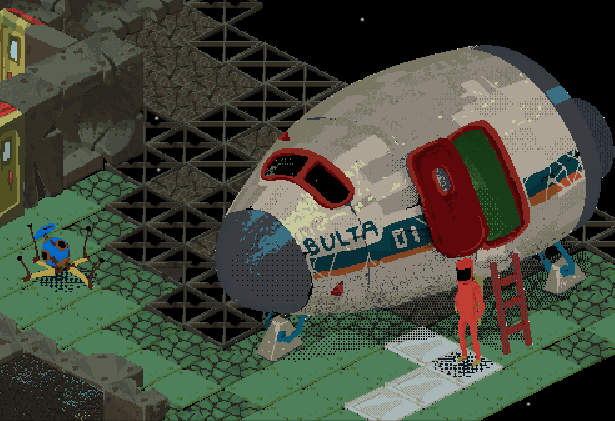
Inspired by classic western isometric RPGs (Fallout, Fallout 2, Arcanum), this is hardcore role playing game set in space 20 years post major conflict over asteroid mining.
-
Built on classic RPG fundaments
-
Post-apocalyptic space exploration.
-
Focus on role-playing (…sometimes to the extreme!).
-
It’s ok to fail - because there are many ways to solve every problem.
-
Completely optional combat.
Role playing
This is the most important part of the game - you can play whatever character you wish, play however you want to. You can be smooth talker, sneaky hacker or brawling bully; or something else - it’s your choice: distribute the points in character creation and make decisions when playing.
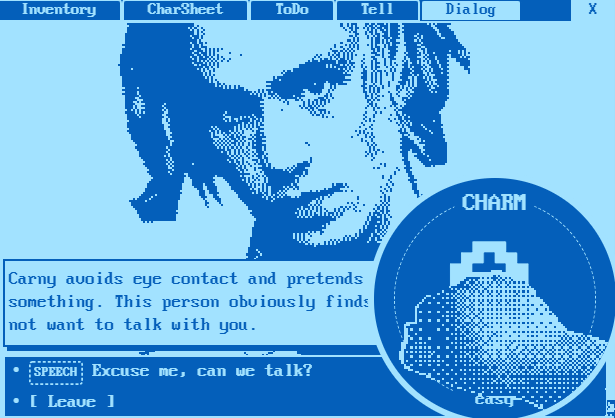
But once the character has been created, be ready for not only abilities but also limitations.
For example, characters with low CHARM value will find that often NPCs won’t even talk to them because of how repulsive they are; or speech - if low, that means you are a shy introvert, unable to initiate the dialog yourself. Lacking computer skills (scitec)? You accidentally crash terminals when trying to use them. Low tinker? Tools might break in your inept hands. Sometimes even too much is not good - too strong (PHYSICAL) and you cannot squeeze into vents thus unable to make use of some shortcuts. And so on - your character stats will signifcantly affect your gameplay style.
Multiple solutions
There are always multiple ways to solve problems (quests), usually tied to your character skills and abilities - play to your character’s strengths, work around its weaknesses. For example, if you cannot convince someone to help you, hack his computer and blackmail him. Or just straight-up pickpocket the guy - all items are always realistically placed in NPC inventories.
Note: there are usually 3-8 ways to complete a quest in the game. They can trigger related events in near future or lead to a different ending in the end slides.
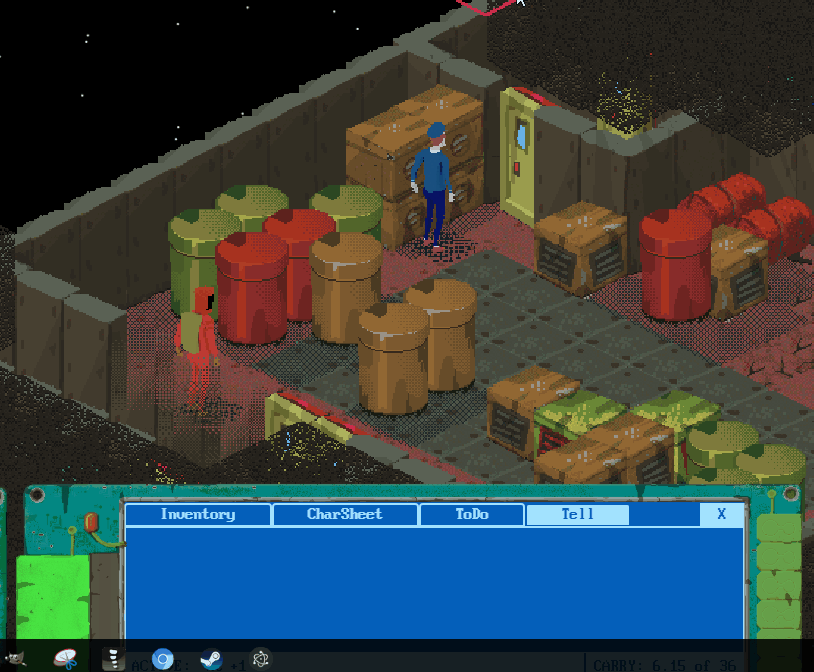
Choice & Consequence
Your actions, your decisions matter to the game world. Make an enemy, you may need him/her later on. Opt for an easier solution to the current problem and you might have to deal with a bigger problem later. And in the end, you will get a unique game ending showing you the future fate of your character and those who he/she impacted through gameplay.
Non-linear world
You have an objective but how you approach it - it’s up to you; the game map is as open to you as reasonably possible (it’s a stranded spaceship after all) and there is no single true path to the end. If you know where to go, what to do - you can try to sequence break the game. Combine that with multiple solutions to every quest and you’ve got freedom to spare.
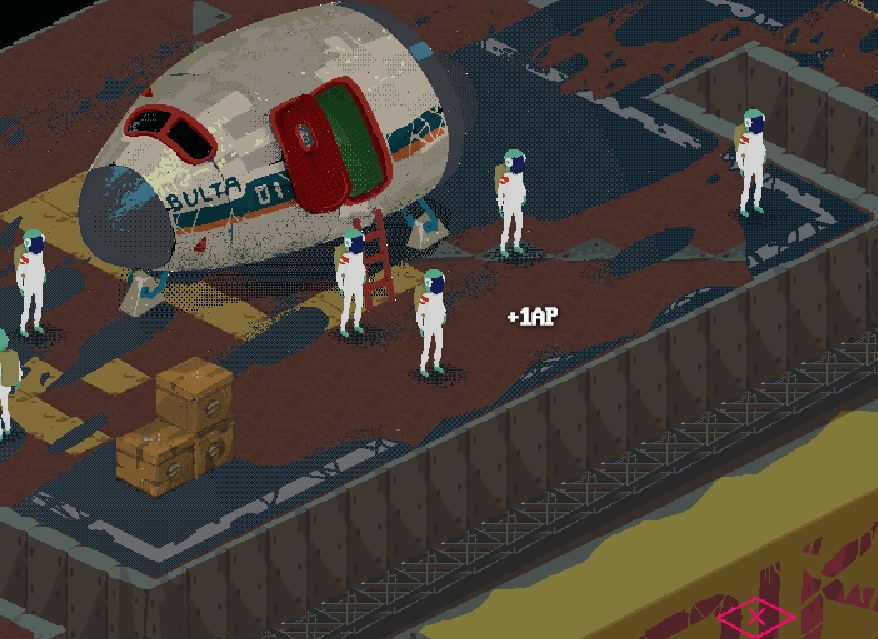
Optional but unlimited violence
You can complete the game without killing anyone. In fact, combat is completely optional. But if you want to fight - there are no immortal or “essential” NPCs - everyone everywhere has finite amount of HP and is fair game.
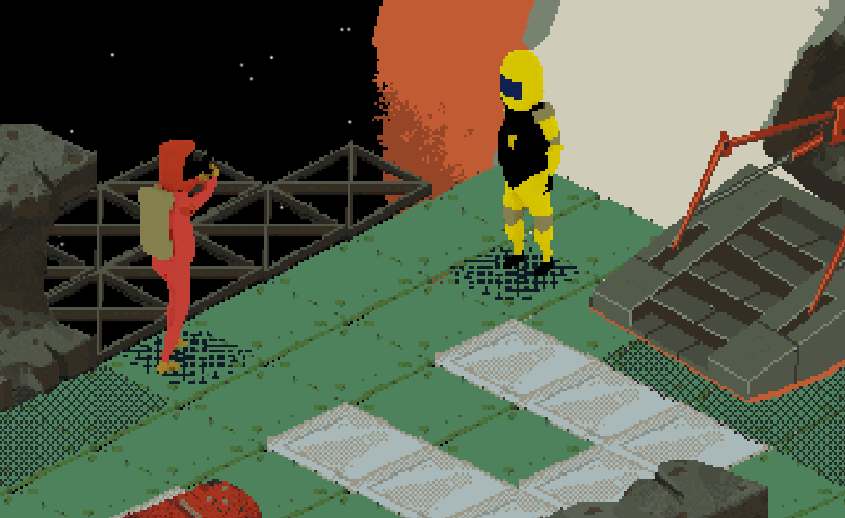
Turn-based combat
Game features old-school tactical turn-based combat with grid based movement, action points and dice rolls.